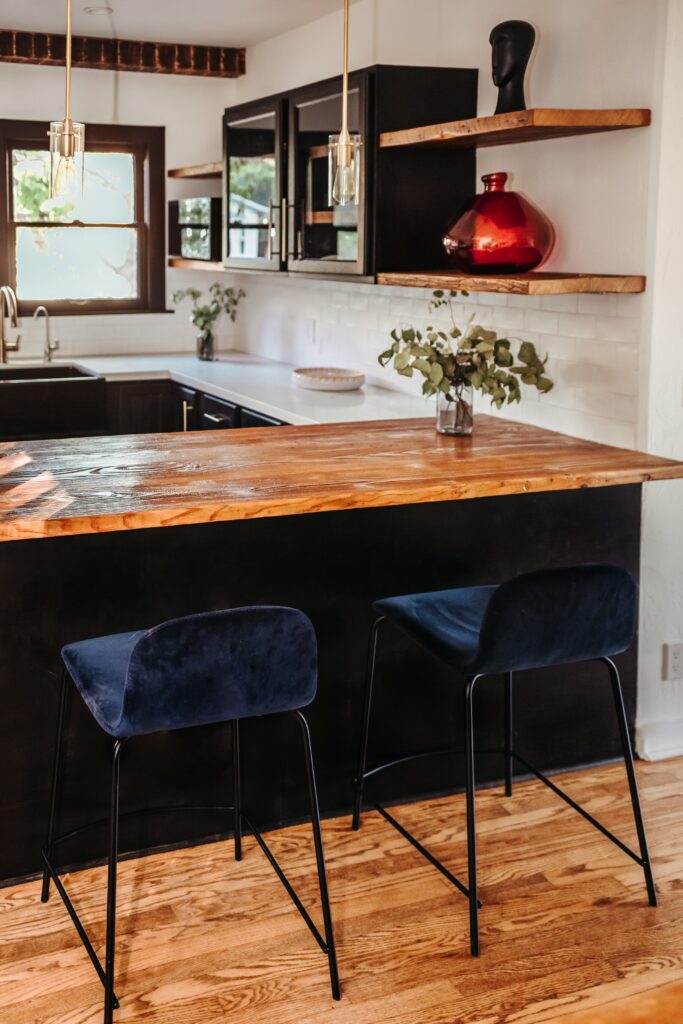An exquisite blend of art and science, the creation of solid wood worktops is a testament to the timeless elegance and enduring versatility of nature’s bounty. This remarkable craftsmanship brings together various species of wood – Oak, Iroko, Maple, and Walnut, each boasting a unique array of properties that significantly influence their performance and aesthetic allure. To appreciate the harmony of form and function encapsulated in your kitchen wood worktop, a deeper understanding of the scientific properties inherent to these woods is paramount. This article unveils the intrinsic attributes of these woods and elaborates on how they translate into remarkable worktops, thereby empowering the discerning clientele with the knowledge to make informed choices. As we traverse the fascinating domain of wood science, we aim to elevate your appreciation for the robust Oak, the resilient Iroko, the light-hued Maple and the rich-toned Walnut, understanding the factors that have solidified their position in the realm of kitchen wood worktops.

Oak Worktops: The Embodiment of Strength and Durability
Oak worktops stand as a paragon of strength and longevity, their dense grain patterns a testament to the robustness nature has imbued within them. The oak tree’s slow growth results in a highly dense, hardwood, directly translating to a worktop capable of withstanding the demands of a bustling kitchen. The cell structure of oak contributes to its dimensional stability, resisting warping under temperature variations. Furthermore, oak’s inherent tannin content serves as a natural deterrent to insects and fungi, bolstering the worktop’s resilience.
The charm of an oak worktop, however, lies in its evolving character: its patina ages gracefully over time, the tone deepening to yield a richer, more nuanced aesthetic, much like a fine wine. The beauty of oak is further enhanced by the presence of unique patterns and whorls, each worktop telling a unique story of its life and growth. Thus, an oak worktop is not only a statement of durability and strength but also a reflection of nature’s creativity, its heart-warming earth tones infusing a sense of warmth and authenticity into your kitchen space. This powerful combination of durability and aesthetic charm is what makes oak worktops an unparalleled choice for any kitchen.
Oak Versus Iroko: Comparing the Resilience and Charm
While oak and iroko both serve as excellent choices for wood worktops, subtle differences distinguish them. Iroko, often termed ‘African teak’, shares oak’s durability but presents a different aesthetic appeal. With a golden to medium brown hue, it lends a warm, exotic touch to kitchens, contrasting with oak’s more traditional appeal. Iroko possesses a high oil content, enabling a natural resistance to water and decay – a trait that makes it an ideal choice for environments exposed to moisture.
However, oak’s dense grain pattern provides it with superior resistance to scratches and dents, fortifying it for heavy-duty use. Furthermore, oak’s wider range of grain patterns and natural marks offers an intriguing, ever-evolving visual landscape. Over time, an oak worktop develops a charming patina, growing in character and allure. Meanwhile, iroko’s colour tends to darken, intensifying its warm glow. Both kinds of wood have their unique qualities, with the choice ultimately boiling down to individual aesthetic preferences and specific kitchen demands. In this juxtaposition of resilience and charm, oak and iroko beautifully illustrate the varied marvels nature offers in the realm of wood worktops.
Oak and Maple Worktops: Weighing Beauty against Functionality
Maple, with its understated elegance and uniform grain, contrasts starkly with oak’s robust character. The wood of the maple tree is lighter in tone, offering a bright, clean look that enhances the sense of space within a kitchen. This aesthetic lightness, however, belies maple’s inherent strength. While not quite matching oak’s resilience, maple does present a respectable hardness, suitable for general kitchen use. However, oak worktops, with their superior density and durability, still hold the upper hand when considering a worktop for heavy, everyday use.
The Grandeur of Oak Against the Nobility of Walnut: Aesthetics and Performance
Walnut worktops, renowned for their luxurious dark tones and striking grain patterns, introduce a note of sophistication to any kitchen. Walnut’s hardness and durability compare favourably with oak, though it falls slightly short in resistance to dents and scratches. Its rich, dark hues provide a perfect counterpoint to oak’s warmer, lighter tones, offering homeowners a chance to create distinct design statements. Despite walnut’s undeniable aesthetic appeal, oak remains the more utilitarian choice, with its unrivalled durability and timeless charm.
Preserving the Natural Elegance of Your Oak Worktop: Care and Maintenance Guidelines
As much as oak worktops are prized for their inherent strength and durability, their longevity also depends on appropriate care and maintenance. Regular oiling enhances the worktop’s resistance to moisture, while also accentuating the wood’s natural grain. Any spills should be promptly wiped up to prevent staining, while abrasive cleaning agents should be avoided to maintain the worktop’s finish. Scratches and minor damages can usually be sanded out, with the area then treated with a coat of oil. This care ensures your oak worktop ages gracefully, enriching your kitchen space for years to come.
Understanding the properties of oak, iroko, maple, and walnut offers invaluable insights when selecting a wood worktop for your kitchen. It provides a scientific basis for your decision, allowing you to balance aesthetic appeal with practicality. Oak stands out for its exceptional strength, durability, and timeless charm, embodying a versatility that accommodates both traditional and modern kitchen designs. Its competitors, while offering unique qualities of their own, provide alternatives to cater to different tastes and needs. However, irrespective of the wood chosen, it’s clear that the integration of nature’s craftsmanship with human innovation creates kitchen spaces that are not just functional, but also incredibly beautiful. Your kitchen worktop isn’t just a surface, it’s a testament to the enduring elegance of wood – a daily reminder of nature’s extraordinary capability to blend form and function in perfect harmony.

